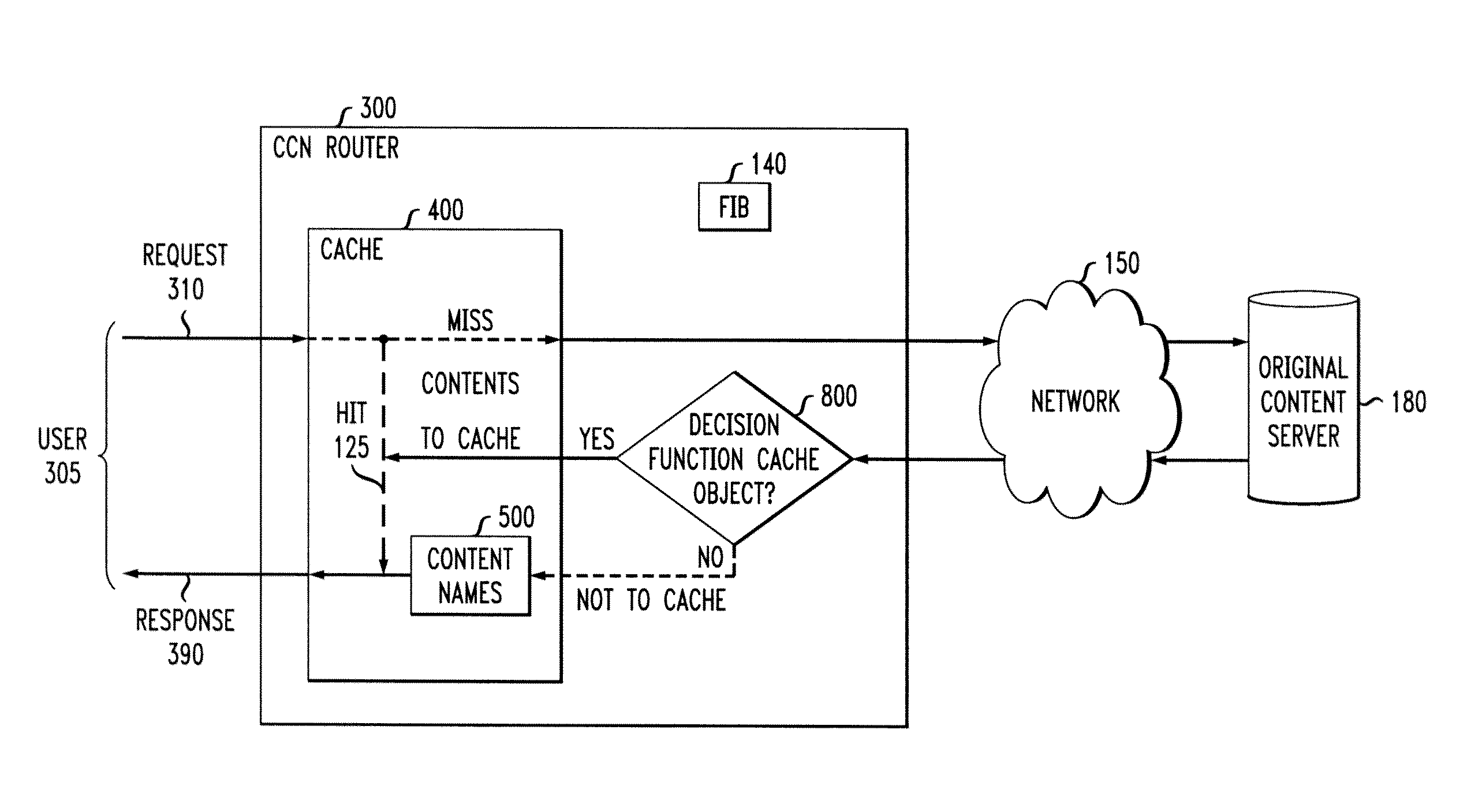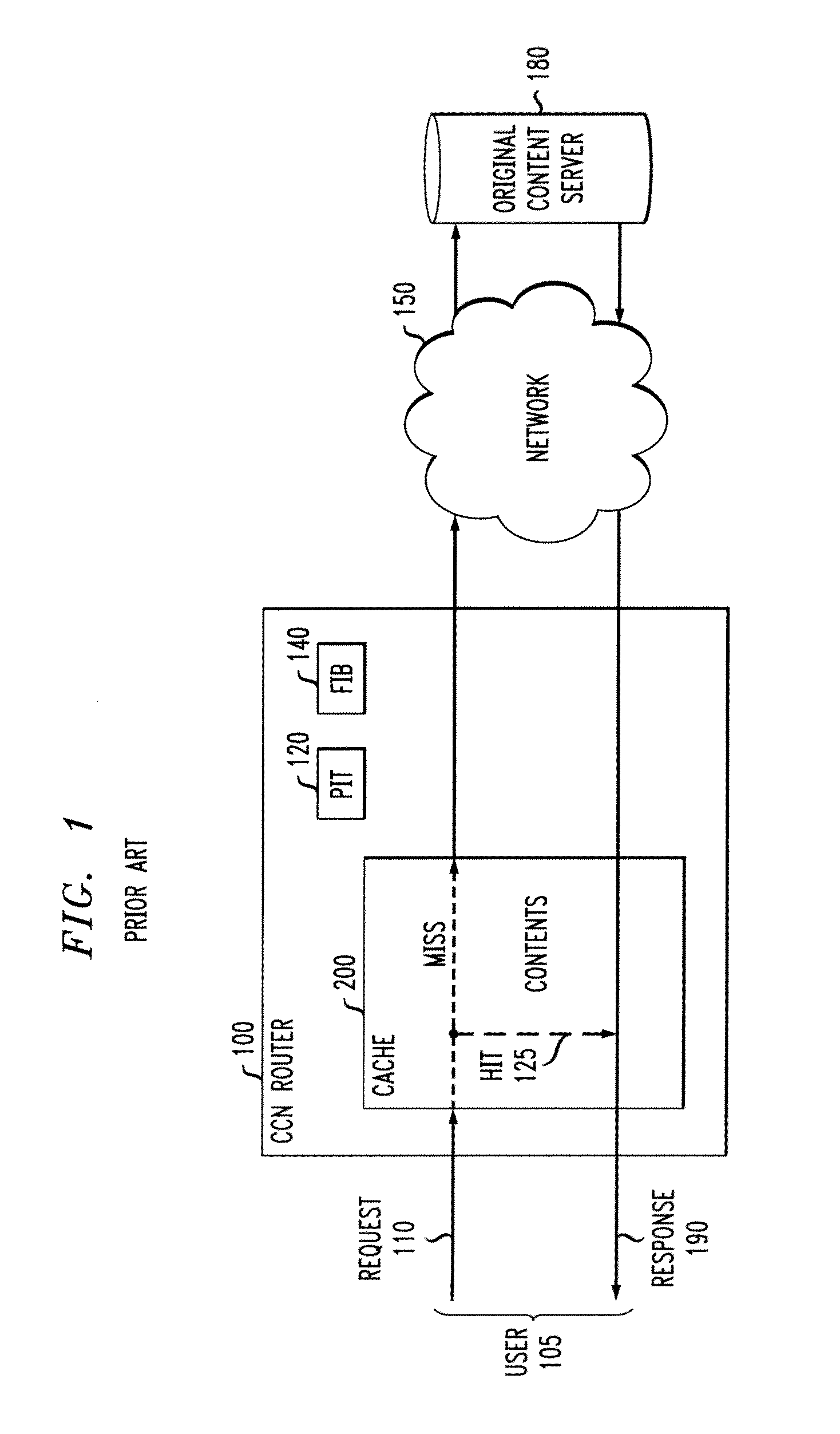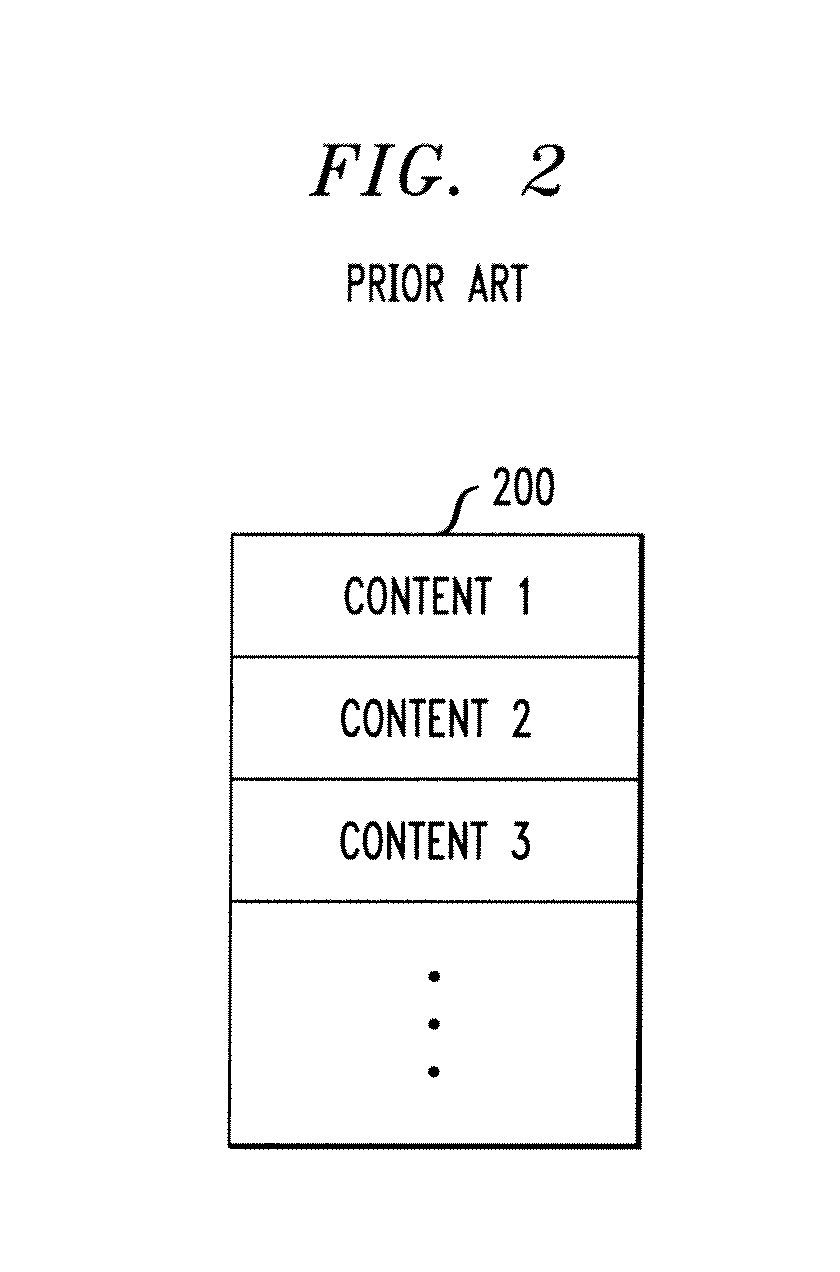Flexible Caching in a Content Centric Network
- Summary
- Abstract
- Description
- Claims
- Application Information
AI Technical Summary
Benefits of technology
Problems solved by technology
Method used
Image
Examples
Embodiment Construction
[0017]The present invention provides improved techniques for flexible caching in a Content Centric Network. According to one aspect of the invention, content objects and content names are stored in a content store rather than separately in a content store and pending interest table, as with conventional CCN approaches. According to a further aspect of the invention, the content names are stored with additional information, such as Request Number and Hop Count, that can be employed by a Decision Function to address new objectives when determining whether or not to store a given content object in the cache, such as maintaining cache robustness in the face of a pollution attack or improving energy efficiency.
[0018]While the present invention is illustrated herein in the context of exemplary CCN networks, the present invention can be implemented in other named-based caching networks, as would be apparent to a person of ordinary skill in the art.
[0019]FIG. 1 illustrates a conventional CC...
PUM
 Login to view more
Login to view more Abstract
Description
Claims
Application Information
 Login to view more
Login to view more - R&D Engineer
- R&D Manager
- IP Professional
- Industry Leading Data Capabilities
- Powerful AI technology
- Patent DNA Extraction
Browse by: Latest US Patents, China's latest patents, Technical Efficacy Thesaurus, Application Domain, Technology Topic.
© 2024 PatSnap. All rights reserved.Legal|Privacy policy|Modern Slavery Act Transparency Statement|Sitemap



